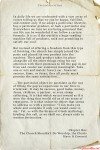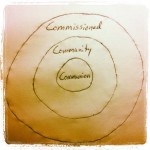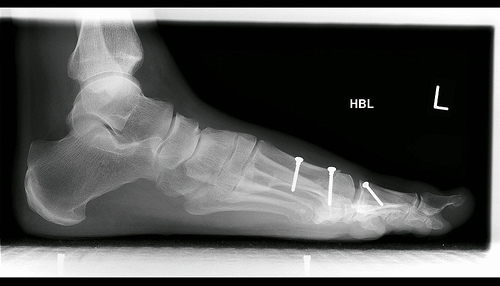I’m taking a week away from the blog, and I’ve asked some of my friends to fill in for me. Today’s post is by Christine Sine. Christine is a physician and a spiritual director, and she and her husband, Tom, run Mustard Seed Associates. But Christine and I have really hit it off over our love of gardening. Snow is still thick here in Minnesota, but it’s time for me to order my seeds. Maybe like me, your mind has already turned to Spring. Christine’s has!
Its garden season here in the Pacific Northwest and my front porch is bulging with lettuce, broccoli, cauliflower and other seedlings waiting to go in the ground. Next week I will start over a hundred tomato plants and the squash and peppers won’t be far behind. Like millions of others throughout the Western world, we have started growing our own vegetables and now provide around 40% of what we eat.
I have so enjoyed watching the growth of the community garden movement. Gardens have sprung up on vacant lots, in parking strips and behind church buildings. Congregations have enthusiastically embraced the need to grow produce, often to help provision food banks and ministries to the poor.
Unfortunately there is often a total disconnect between what happens in the garden and worship inside the building. Yet it seems to me that gardening is one of the most profound acts of worship we can engage in. God’s first act after completing creation was to plant a garden – the garden of Eden. And in the first sighting of Jesus after the resurrection he is mistaken by Mary Magdalene for the gardener because that is precisely what he is – the gardener of the new creation.
So much of our garden activity is performed kneeling, in the position of prayer and supplication. I kneel to weed, to plant and to harvest and in this position often find myself meditating and praying. If I am troubled by some seemingly insurmountable problem, there is no better place to thrash it out than on my knees in the garden. If I am irritable or depressed, there is no better therapy than weeding.
However there is far more than this that makes gardening a worshipful act. I often tell people that I read about the life, death and resurrection of Christ in the bible, but in the garden I experience it. Every time I plant a tiny misshapen seed and watch it burst into life from its earthy tomb I feel as though I have seen the Easter story reenacted.
Early Celtic Christians were very aware of this. Three days before sowing, farmers would sprinkle the seed with water in the name of the Father, Son and Holy Spirit. If possible they would plant on a Friday. The moistening hastened the seed’s growth and planting on Friday was always a reminder of the Christ’s death and burial. Planting was always symbolic of the planting of Christ, the seed of the new world in which resurrection life will come for all humankind as well as creation.
We are currently just past the season of the church year known as Lent, a time of preparation for Easter. A couple of years ago when Earth Day and Good Friday converged, I wrote a liturgy that brought these observances together. But I found I could not stop there however because the story of God in the garden does not stop there. On Easter Sunday expanded the liturgy into a new blog post Jesus Has Risen, A New Creation Has Begun to incorporate the resurrection of Christ as well.
There are other wonderful and worshipful lessons. I read about the faithfulness of God to Israel in the Old Testament, but I experience it every time I watch the rain fall and nourish the seeds that have been planted. I read about the miracle of the fish and loaves but I experience just as profound a miracle every time I am overwhelmed by the generosity of God’s harvest.
So perhaps this summer we should take our worship outside into the garden and curate a whole new experience for our congregations. The gospel stories come alive in the garden, not just because we understand more fully the agricultural parables which Jesus so often used, but also because the garden is the place in which we can truly anticipate God’s promise for the future. In the garden, as we watch the plants grow and bear fruit in their season it is not hard to believe that one day all creation will indeed be made whole, restored and renewed to become all that God intends it to be.
Christine Sine is the Executive Director of Mustard Seed Associates. She is also an enthusiastic gardener and author. Her most recent books are To Garden with God and Return to Our Senses. She blogs about gardening, liturgy and worship at http://godspace.wordpress.com












